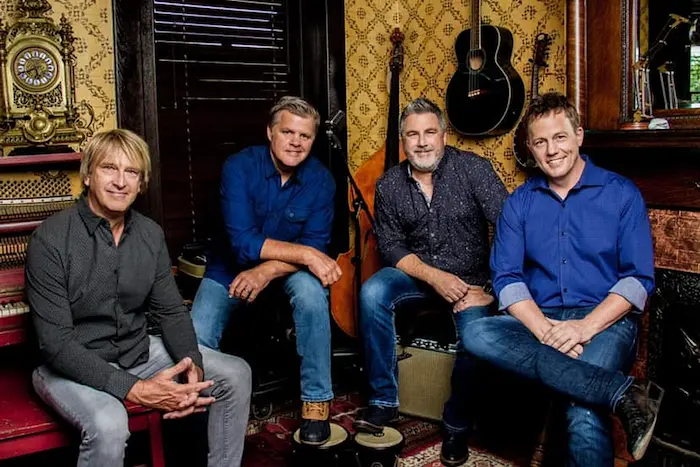Lonestar is an iconic American band that has captured the hearts of millions with its unique blend of country and pop music. Since its formation in 1992, the band has consistently pushed the boundaries of traditional country music, integrating heartfelt lyrics, rich harmonies, and catchy melodies. This article delves into the distinct style of Lonestar, exploring the elements that define their music and how they have managed to remain relevant for decades.
The Roots of Lonestar’s Musical Style
The Emergence of Country-Pop
Lonestar emerged at a time when country music was evolving. The early 1990s saw a rise in country-pop, a subgenre that mixed traditional country instrumentation with pop melodies. Lonestar embraced this trend, but with their own twist, making their sound fresh and unique.
By integrating the storytelling nature of country with the broad appeal of pop, Lonestar created music that was accessible to a wide audience. Their songs often feature themes of love, family, and life’s ups and downs, which resonate deeply with listeners.
Influences Shaping Lonestar’s Sound
Lonestar drew inspiration from a variety of sources. Classic country artists like George Strait and Alabama influenced their storytelling and instrumentation, while pop legends like the Eagles inspired their harmonious vocals and melodies. This mix of influences allowed Lonestar to craft a sound that is both grounded in country traditions and forward-looking.
Defining Elements of Lonestar’s Music
Heartfelt Lyrics
One of the hallmarks of Lonestar’s music is their emotionally rich lyrics. Songs like “Amazed” and “I’m Already There” are perfect examples of this. These tracks tell deeply personal stories about love, longing, and family connections, striking a chord with fans worldwide.
Their lyrics are straightforward yet profound, allowing listeners to connect with the narratives on a personal level. This simplicity, combined with emotional depth, is a key component of Lonestar’s style.
Rich Vocal Harmonies
Vocal harmonies are central to Lonestar’s sound. The band’s members, led by frontman Richie McDonald, have consistently delivered seamless harmonies that add depth and texture to their songs. This emphasis on vocals has become a defining characteristic of their music, setting them apart from many of their peers in the country genre.
Blending Traditional and Modern Sounds
Lonestar skillfully blends traditional country instruments like steel guitars and fiddles with modern production techniques. This fusion allows them to honor their country roots while appealing to contemporary audiences. Songs like “No News” and “What About Now” showcase this blend, featuring a mix of twangy guitars, energetic rhythms, and polished production.
Lonestar’s Signature Hits and Their Impact
“Amazed” – A Timeless Love Ballad
“Amazed” is arguably Lonestar’s most iconic song. Released in 1999, it became a massive hit, topping both country and pop charts. The track’s lush arrangement, heartfelt lyrics, and soaring vocals exemplify the band’s ability to create music that transcends genres.
This song has been a staple at weddings and romantic occasions, cementing its status as one of the most beloved love ballads of all time. Its crossover success also helped introduce Lonestar to a broader audience.
“I’m Already There” – A Tribute to Family
“I’m Already There” is another standout track in Lonestar’s catalog. Released in 2001, the song tells the story of a family separated by distance but united in spirit. Its poignant lyrics and heartfelt delivery resonated deeply with listeners, especially those with loved ones in the military or working far from home.
This track highlights Lonestar’s ability to address universal themes in a way that feels personal and relatable, further solidifying their place in country music history.
Other Memorable Tracks
Songs like “No News,” “What About Now,” and “My Front Porch Looking In” also showcase Lonestar’s range and versatility. From upbeat, radio-friendly hits to introspective ballads, these tracks demonstrate the band’s ability to connect with fans on multiple levels.
Lonestar’s Influence on Country Music
Bridging the Gap Between Country and Pop
Lonestar’s success played a significant role in popularizing country-pop. Their ability to create songs that appealed to both country purists and pop fans helped broaden the audience for country music. This crossover appeal paved the way for other artists to experiment with blending genres.
Inspiring Future Artists
Many contemporary country artists cite Lonestar as an influence. Their focus on vocal harmonies, emotional storytelling, and genre-blending has inspired acts like Lady A, Rascal Flatts, and others who continue to push the boundaries of country music.
The Evolution of Lonestar’s Sound
Adapting to Changing Trends
Over the years, Lonestar has evolved their sound to stay relevant. While their early work leaned heavily on traditional country elements, later albums incorporated more contemporary production styles. This adaptability has allowed them to maintain their appeal across different eras.
Remaining True to Their Roots
Despite evolving, Lonestar has always stayed true to the core elements of their style: heartfelt lyrics, rich harmonies, and a balance of traditional and modern sounds. This consistency has endeared them to fans and ensured their longevity in the music industry.
See Also:Opera vs. Blues, Gospel, and Country Music: What’s the Difference
Conclusion
Lonestar’s style is a testament to the power of blending tradition with innovation. By combining the heartfelt storytelling of country music with the catchy melodies and polished production of pop, they have created a sound that resonates with listeners across generations.
Their music continues to inspire, comfort, and entertain, proving that great songs, delivered with sincerity and passion, will always find an audience. As they look to the future, Lonestar remains a shining example of what makes country-pop such a compelling and enduring genre.
Related Topics
What is the First Platinum lp? Unveiling “Wanted! The Outlaws”
Types of Country Music: A Full Guide to the Genres and Subgenres

